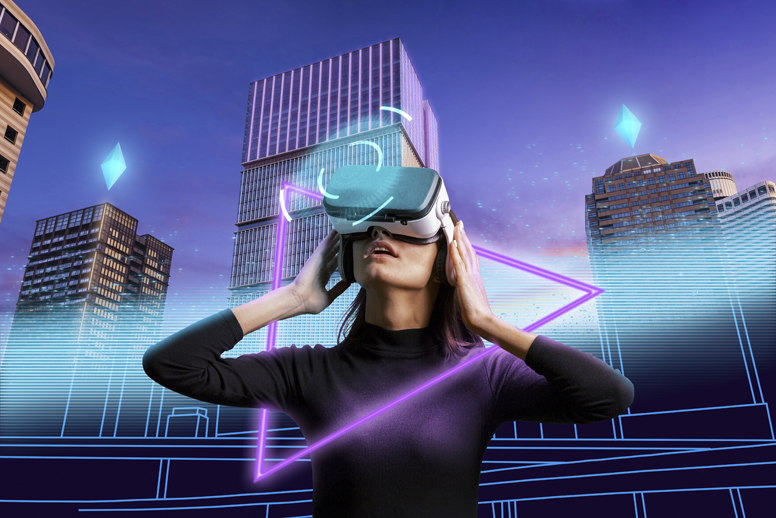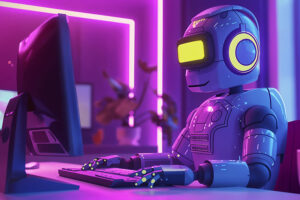Designing with AI Assistants: Collaborator or Competitor?

AI has become a hot topic in the design world — some hail it as a creative partner, while others fear it as a job-stealing competitor. But is AI really here to replace designers, or is it simply a new-age assistant amplifying human potential?
In today’s fast-paced digital environment, businesses are under constant pressure to deliver seamless, engaging user experiences. Balancing innovation, speed, and human-centric design is no easy task. Here’s where AI assistants enter the picture — promising to automate repetitive tasks and accelerate workflows.
At UXGen Design Studio, we’ve seen firsthand how AI, when used strategically, becomes a collaborator rather than a competitor. We help brands merge AI capabilities with human creativity to create digital experiences that not only look good but also connect emotionally with users.
Let’s break down this evolving relationship.
The Real Issue: Fear of Replacement vs. Potential of Collaboration
The fear that AI will replace creative professionals isn’t new. According to a 2024 McKinsey report, 48% of design professionals worry about AI encroaching on their roles. However, the same study also revealed that companies integrating AI in design reported a 67% improvement in design efficiency and a 45% boost in customer satisfaction.
So why the disconnect?
The problem lies in perception:
- Many view AI as an “auto-designer” rather than a “design assistant.”
- Businesses rush to adopt AI tools without understanding their limitations.
- Designs generated purely by AI often lack emotional depth and cultural sensitivity.
- Misusing AI can lead to a 30-40% drop in user engagement due to disconnected experiences.
The real risk isn’t AI itself — it’s ignoring the human element in design.
How AI Can Amplify Human Creativity in Design
Rather than replacing designers, AI excels at handling tasks that are repetitive, data-heavy, or time-consuming. This allows human designers to focus on strategic, creative, and empathetic aspects of the user experience.
Here’s how AI and human designers can work together effectively:
- Boosting ideation: AI tools like Figma AI or Canva’s Magic Design can generate multiple design variations, accelerating brainstorming while keeping humans in creative control.
- Enhancing user insights: AI analyzes behavioral patterns, but it’s the designer who interprets this data to craft meaningful experiences.
- Streamlining workflows: From automated wireframing to rapid prototyping, AI reduces manual effort, improving delivery timelines by 30-50%.
- Scaling personalization: AI enables large-scale personalization, while designers ensure brand consistency and emotional relevance.
- Ensuring accessibility and ethics: Human designers validate AI outputs to ensure inclusivity, accessibility, and alignment with ethical design standards.
At UXGen Design Studio, we leverage AI to enhance — not replace — human design expertise, ensuring every user experience remains human-centered and emotionally engaging.
Let’s show you how UXGen Design Studio blends AI with human empathy. Contact us now.
Case Studies: Human-AI Synergy in Action
One of our clients, a leading D2C skincare brand, was struggling with high bounce rates on their product pages — over 60%, despite using AI-driven personalization tools.
Our approach was clear:
- Conduct a human-centered UX audit to identify emotional friction points.
- Use AI to generate interface iterations based on user behavior data.
- Refine those AI-generated layouts through human design thinking.
- Validate improvements with real-user feedback and A/B testing.
The result?
- Bounce rates reduced by 28% in just two months.
- Conversion rates increased by 20%.
- Average session time improved by 35%.
In another project, a SaaS product was overwhelmed with data-heavy dashboards generated through AI automation. By reworking the information hierarchy with human-centered design principles, we helped improve user task completion rates by 32%, making the platform more intuitive and user-friendly.
These examples show how AI and human designers, working hand-in-hand, create better outcomes than either could achieve alone.
Practical Steps to Embrace AI as a Design Partner
For businesses looking to integrate AI in their design processes, here are actionable steps to follow:
- Define clear roles for AI: Automate repetitive tasks but retain human oversight for strategic design decisions.
- Invest in training: Upskill your team to work alongside AI tools without losing their creative edge.
- Maintain human validation: Always validate AI-generated designs with real user feedback.
- Blend data with empathy: Use AI-driven insights to inform designs, but let human empathy shape user experiences.
- Establish ethical guidelines: Ensure AI usage aligns with accessibility, inclusivity, and brand values.
For students and aspiring designers:
- Get comfortable using AI as a productivity enhancer.
- Focus on building core UX skills — empathy, user psychology, design thinking.
- Stay updated on AI trends but remain rooted in human-centered design principles.
Let’s discuss how we can replicate these results for your business. Book a free call.
How UXGen Design Studio Can Help You Navigate AI in Design
At UXGen Design Studio, we specialize in turning AI into a strategic design collaborator. Here’s how we can support your business:
- AI-Driven UX Workshops to help your team integrate AI effectively.
- Human-Centric Design Audits to refine AI-generated experiences.
- Rapid Prototyping blending AI efficiency with human creativity.
- Conversion Rate Optimization (CRO) strategies that combine AI insights with emotional UX.
- Ethical AI Design Consulting ensuring responsible AI adoption.
Together with UXGen Technologies, UXGen Academy, and UXGen Marketing, we offer end-to-end solutions for UX, UI, digital growth, and marketing challenges. We help businesses harness AI’s potential while keeping human connection at the core of every design.
Wrapping Up: AI is Your Design Ally, Not Your Rival
AI assistants are powerful tools, but they lack human empathy, creativity, and emotional intelligence. The future of design belongs to those who can blend AI’s speed and data capabilities with human-centric thinking.
By embracing AI as a collaborator, businesses can achieve faster workflows, deeper user engagement, and scalable personalization — without sacrificing the human touch.
At UXGen Design Studio, we don’t see AI as a competitor. We see it as an opportunity to elevate human creativity and deliver experiences that truly resonate.
Let UXGen Design Studio help you craft AI-human synergy for business growth. Let’s connect.
FAQs
Will AI replace designers in the next 5 years?
No. While AI will automate repetitive design tasks, human creativity, empathy, and strategic thinking remain irreplaceable.
How can AI improve UX design processes?
AI accelerates ideation, prototyping, and user behavior analysis, allowing designers to focus on crafting meaningful and emotionally engaging experiences.
What are the risks of over-relying on AI in design?
Overuse of AI can lead to generic, emotionally disconnected designs, impacting user trust and brand perception.
How does UXGen Design Studio ensure AI is used responsibly?
We follow a human-first design philosophy, using AI to enhance efficiency while ensuring emotional connection, inclusivity, and ethical design practices.
Can beginners and students benefit from learning AI design tools?
Absolutely. Learning AI tools enhances productivity, but a strong foundation in UX principles and human-centered design remains essential for success.

Top 5 AI Tools for Automating Frontend Development
The Best AI Tools for UI/UX Design (Figma Plugins & More)

About the Author
Subscribe for fresh
tips & top articles
UXGen Studio uses the data submitted through this form to send you relevant marketing insights, blog updates, and learning resources. To learn more, read our Privacy Policy.





